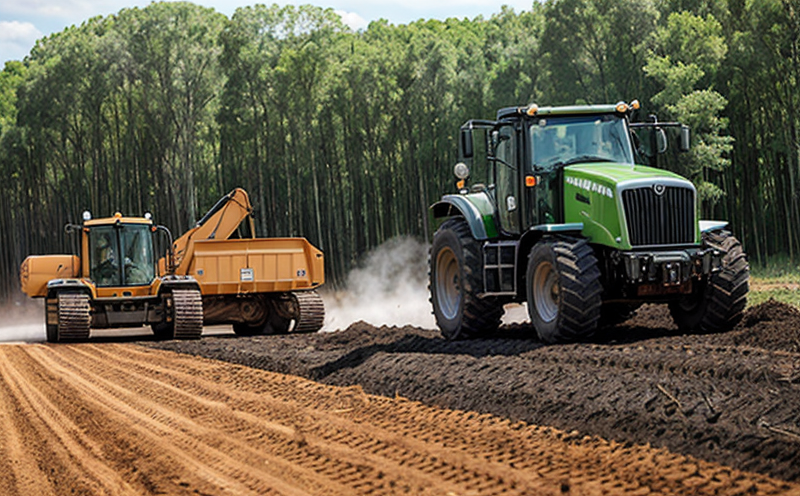The Environmental Impact and Sustainability of Equipment: A Critical Examination
In recent years, the world has witnessed a growing awareness of environmental issues and their impact on human societies. Climate change, pollution, deforestation, and loss of biodiversity have become pressing concerns for governments, businesses, and individuals alike. As we strive to mitigate these problems, it is essential to consider the role that equipment plays in our daily lives and its contribution to environmental degradation.
Equipment comes in various forms, including industrial machinery, transportation vehicles, consumer electronics, and many others. Each of these products has a distinct lifespan, usage pattern, and environmental impact. The production, operation, maintenance, and disposal of equipment can significantly affect the environment through emissions, resource depletion, waste generation, and pollution.
The Production Stage: Resource Extraction and Manufacturing
Material extraction: Equipment production requires raw materials such as steel, aluminum, copper, and rare earth metals. These resources are often extracted from non-renewable sources like mines, leading to soil degradation, deforestation, and water pollution.
For example, the extraction of lithium for electric vehicle batteries has raised concerns about water usage, land use, and energy consumption in regions like Chile and Australia.
Manufacturing processes: The production of equipment involves complex manufacturing processes that consume significant amounts of energy and resources. These processes often rely on fossil fuels, contributing to greenhouse gas emissions and air pollution.
For instance, the manufacture of electronic devices requires the use of chemicals and solvents, which can lead to toxic waste generation and harm human health.
The Operational Stage: Energy Consumption and Emissions
Energy consumption: Equipment operation consumes a significant amount of energy, often in the form of electricity or fossil fuels. This energy usage contributes to greenhouse gas emissions and air pollution.
For example, industrial machinery, such as those used in manufacturing processes, can account for up to 30 of total energy consumption in some industries.
Emissions: The operation of equipment releases various pollutants into the atmosphere, including carbon dioxide (CO2), methane (CH4), nitrous oxide (N2O), and particulate matter (PM).
For instance, transportation vehicles, such as cars and trucks, are significant emitters of CO2, CH4, and N2O, contributing to climate change.
The Disposal Stage: Waste Generation and Management
Waste generation: The production, operation, and maintenance of equipment generate a vast amount of waste, including hazardous materials like batteries, electronics, and chemicals.
For example, the disposal of electronic devices can result in the release of toxic substances like lead, mercury, and cadmium into landfills or incinerators.
Waste management: The improper disposal of equipment waste can have severe environmental consequences, including soil contamination, water pollution, and human health impacts.
For instance, the burning of plastic waste has been linked to air pollution, climate change, and the release of toxic chemicals.
QA Section: Additional Details on Environmental Impact and Sustainability
Q1: What are some examples of equipment that have a significant environmental impact?
A1: Industrial machinery, such as those used in manufacturing processes, transportation vehicles (cars, trucks, airplanes), consumer electronics (computers, smartphones, televisions), and construction equipment (cranes, excavators).
Q2: How can companies reduce the environmental impact of their equipment production?
A2: Companies can adopt sustainable practices such as:
Using renewable energy sources
Implementing energy-efficient manufacturing processes
Minimizing material usage through design for sustainability
Investing in recycling and waste reduction programs
Q3: What are some strategies for reducing emissions during the operational stage of equipment use?
A3: Strategies include:
Improving fuel efficiency through technology or changes in driving habits
Transitioning to cleaner energy sources (electric, hybrid, biofuels)
Implementing energy-saving technologies (LED lighting, solar panels)
Encouraging carpooling, public transportation, or walking/biking
Q4: How can consumers make environmentally friendly choices when purchasing equipment?
A4: Consumers can:
Research the environmental impact of different products
Choose products with lower carbon footprints or made from sustainable materials
Support companies that prioritize sustainability and eco-friendliness
Avoid single-use or disposable products whenever possible
Q5: What are some best practices for responsible equipment disposal?
A5: Best practices include:
Recycling or repurposing equipment whenever possible
Donating functional equipment to charity or second-hand stores
Properly disposing of hazardous materials (batteries, electronics)
Encouraging the use of take-back programs or manufacturer-led recycling initiatives
Q6: Can technology play a role in reducing the environmental impact of equipment?
A6: Yes, technology can:
Improve energy efficiency and reduce emissions through innovations like smart grids and IoT sensors
Enable the development of more sustainable materials and production processes (e.g., 3D printing)
Facilitate remote monitoring and maintenance, reducing the need for physical presence and travel
Q7: What are some policy or regulatory measures that can encourage sustainability in equipment production and use?
A7: Governments can:
Implement stricter emissions standards and regulations
Offer incentives for sustainable technologies and practices (tax credits, subsidies)
Develop take-back programs or extended producer responsibility policies
Encourage corporate social responsibility through reporting requirements
Q8: How can education and awareness campaigns contribute to reducing the environmental impact of equipment?
A8: Education and awareness campaigns can:
Raise public understanding of the environmental consequences of equipment production and use
Promote sustainable choices and behaviors among consumers
Support businesses in adopting environmentally friendly practices
Encourage governments to implement effective policies and regulations.
In conclusion, the environmental impact and sustainability of equipment are critical concerns that require attention from producers, users, and policymakers alike. By understanding the various stages of equipment production, operation, and disposal, we can identify opportunities for improvement and develop strategies for reducing waste, emissions, and resource depletion. Through education, awareness, and collective action, we can work towards a more sustainable future for all.

































